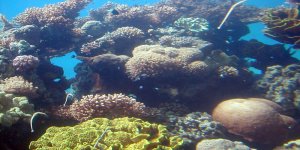 The diversity of marine life in the Gulf of Maine region is much greater than previously thought.
The diversity of marine life in the Gulf of Maine region is much greater than previously thought.The Gulf of Maine Program of the Census of Marine Life, with the Huntsman Marine Science Center of St. Andrews, New Brunswick, announced today the first count of known marine species in the Gulf of Maine region — more than 50% larger than previous estimates. The count is 3,317 species and includes both year-round species and those that migrate to the region seasonally. The Canadian-US project is part of the international Census of Marine Life. The count comes from the new Gulf of Maine Register of Marine Species, the first register of its kind for the region. According to Evan Richert, project director for the Gulf of Maine Census, "The register serves as a baseline for understanding the biodiversity of this renowned and heavily exploited region of the Atlantic Ocean."
Among the species are 652 kinds of fish, 184 species of birds, and 32 species of mammals. Microscopic plants, including the algaes, alone account for an impressive 733 different species, or more than one of every five species in the Gulf of Maine region.
"This register is the first, essential step toward understanding the Gulf of Maine as a whole ecosystem," said Lewis Incze, chief scientist of the Gulf of Maine Census, which is based at the University of Southern Maine. "This lays the foundation for the next step, which is to understand how these species interact with each other and their surroundings to make the ecosystem work."
For an animated map that shows the decline of some of the best known of these, such as cod and haddock, see the Gulf of Maine’s Dynamic Atlas.
Some species are recently arrived as the result of human activities, such as shipping, and are unwelcome invaders that are altering local ecosystems. These include the European green crab, a small shore crab that is an efficient colonizer and predator.
~Sensus of Marine Life.